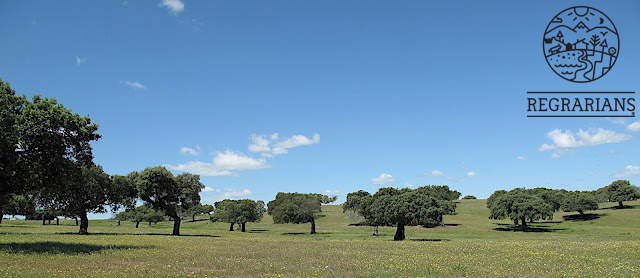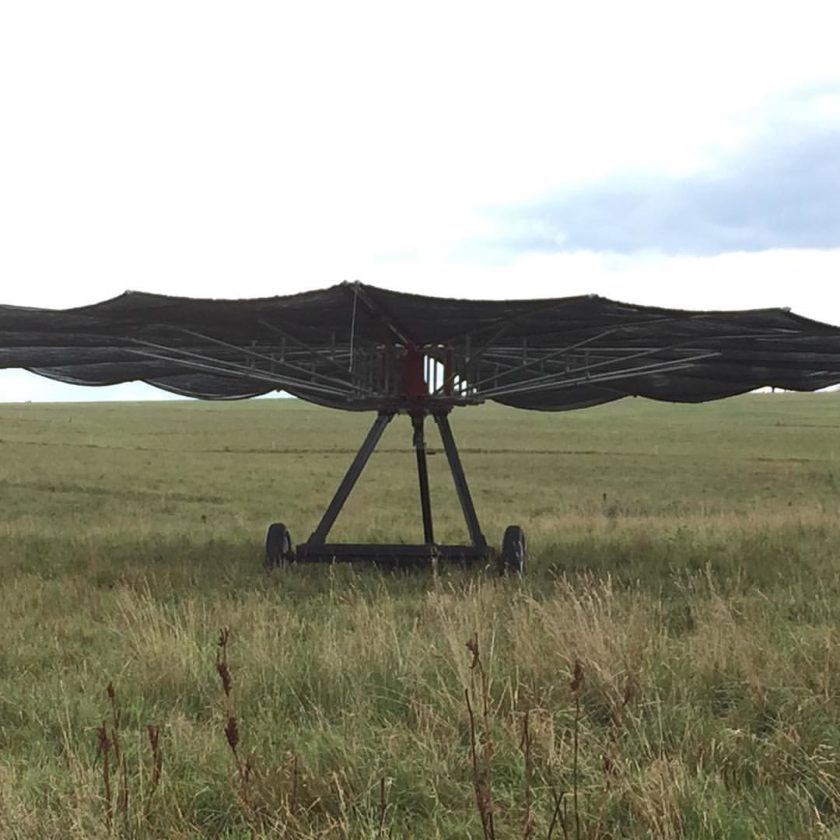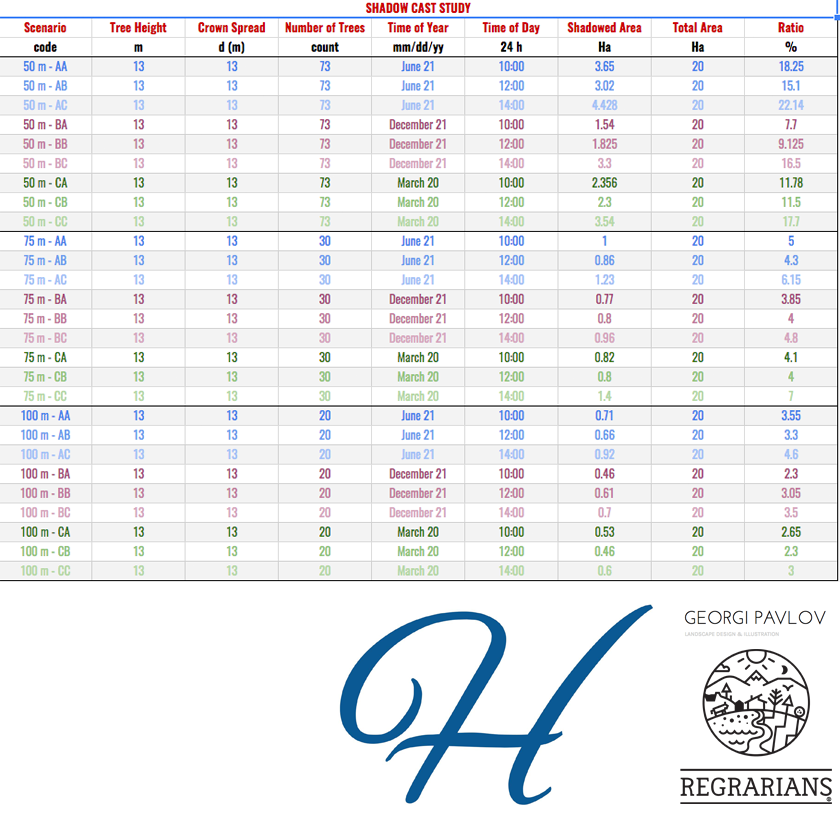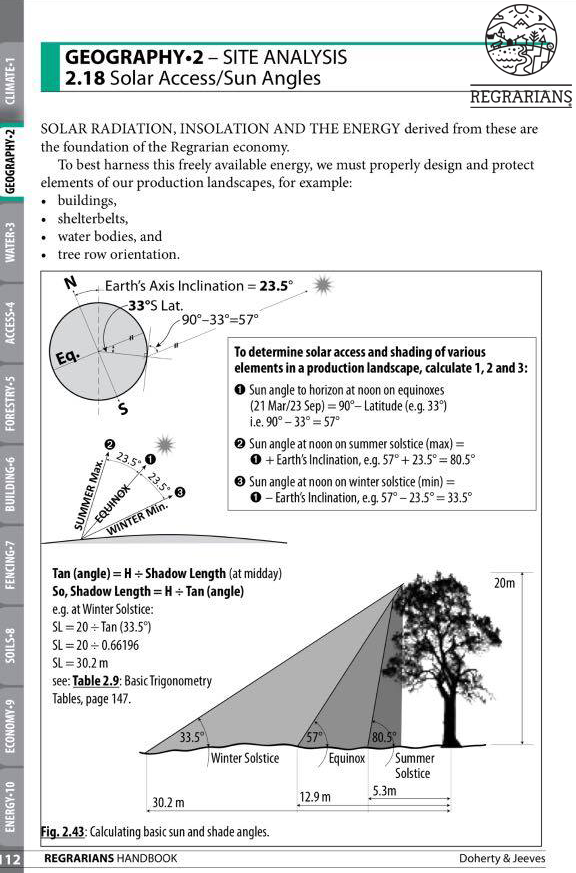The integration of trees into agricultural landscapes is done in many different ways. One layout that has a lot of practical and aesthetic appeal to even the most ardent of graziers is the savannah. Otherwise known as open grassy woodlands, dehesa (see photo below) and montado these systems are seen to be acceptable at least for the appearance that trees are not effecting the growth and performance of grasslands unduly.
That people are now investing in portable shade structures (such as the $20,000+ ShadeHaven system below) to mimic trees speaks to the value that shade has to the performance of grazing animals and yet despite this (and their expense) some people still don’t integrate actual trees into their production landscapes.
One innovation from Spain that has occurred in the last few years is the Arborshield. This is a great leap forward in protecting isolated trees through the establishment period — we’re looking to use these in the establishment of the trees at ‘Holstons Station’ — otherwise we’re not confident that the large herds of cattle will have our vision in mind as they maraud this landscape!
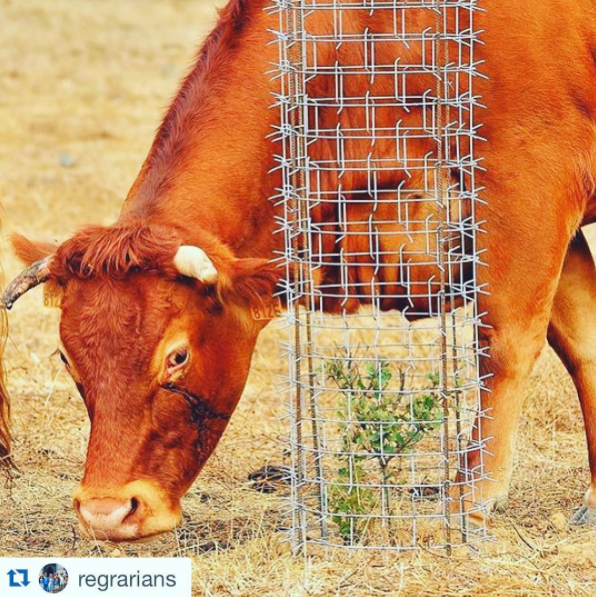
With the Holstons Pastoral Co. project here in Victoria, Australia (east Gippsland) the client shared a vision with Regrarians’ Darren J. Doherty to integrate productive trees into the open and exposed crests and slopes of the property. Our suggestion was that in order for grazing production to not be compromised we’d look to running a shade study — the object being to determine the optimum spacing of trees into the open areas of this magnificent property. We tasked Regrarians’ partner Georgi Pavlov with this job and he set to work using 3D rendering software to do just that — with this I asked Georgi to look at the impact of shade of trees spaced at 50m, 75m and 100m and at 10am, 12noon and 2pm on the equinox and solstices. With this Georgi looked at a study area of 20ha and the respective area (in hectares) shaded at the different spacings and at the different times.
We’ve been interested in this topic for a long time and as a result devoted a section to the topic in the #2Geography chapter of the Regrarians Handbook:
As so whilst from the shade study of ‘Holstons Station’ it is clear (and already self-evident) that a 100m spacing has the least shading of the pastures it was also important to see what the aesthetic of these different spacings was too. To do this Georgi created a 3D model of the landscape and then placed trees at the 3 different spacings, – 50, 75, and 100 m.
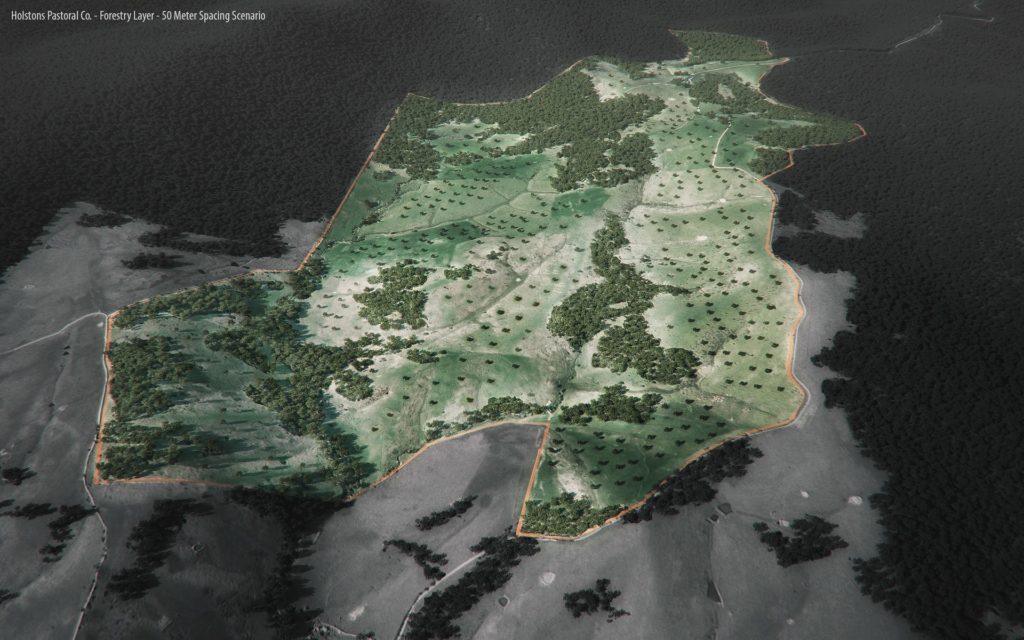
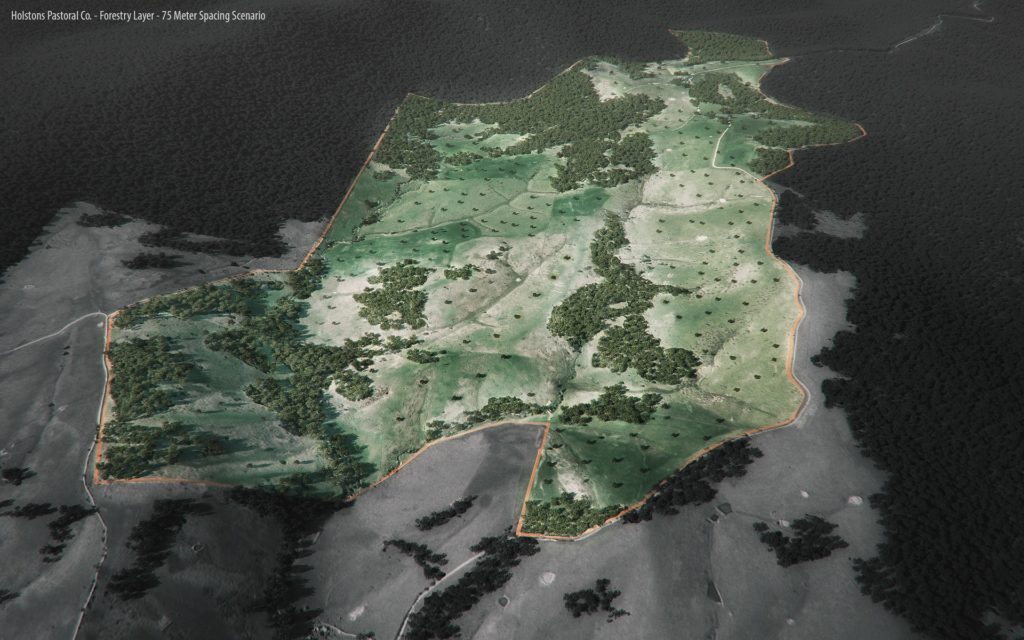
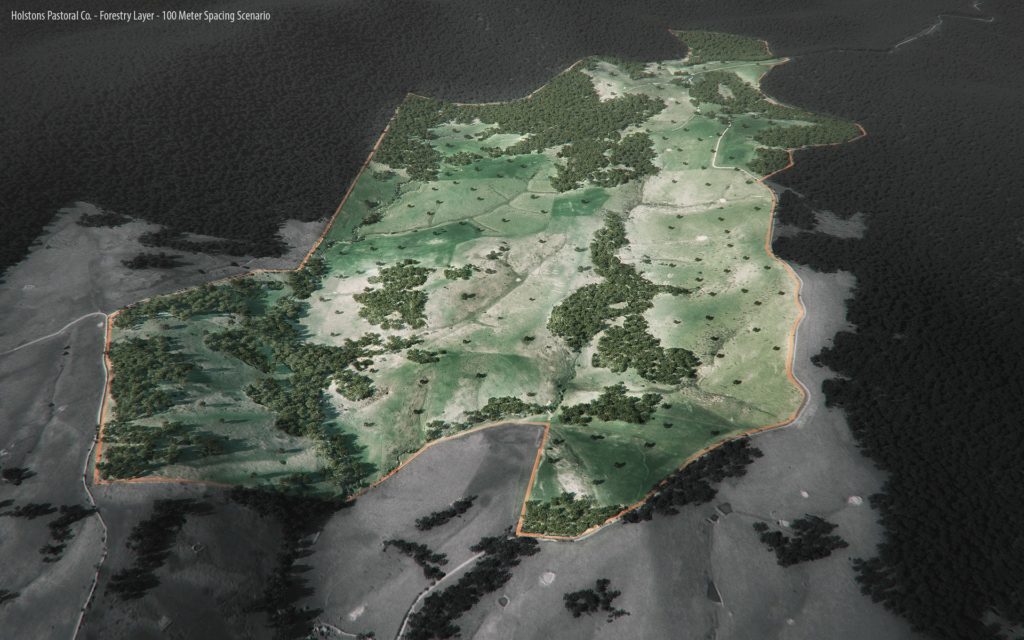
Another aspect we considered was the ‘layout of the layout’. We looked at applying #KeylineGeometry to this layout — this is to accommodate machinery movement through the landscape — this being best accomplished where equidistance between trees is provided.
Next thing for us is to complete a bill of quantities for the 3 different density scenarios — we’ll update this page when that’s done and look at the respective cost of establishing each density.

